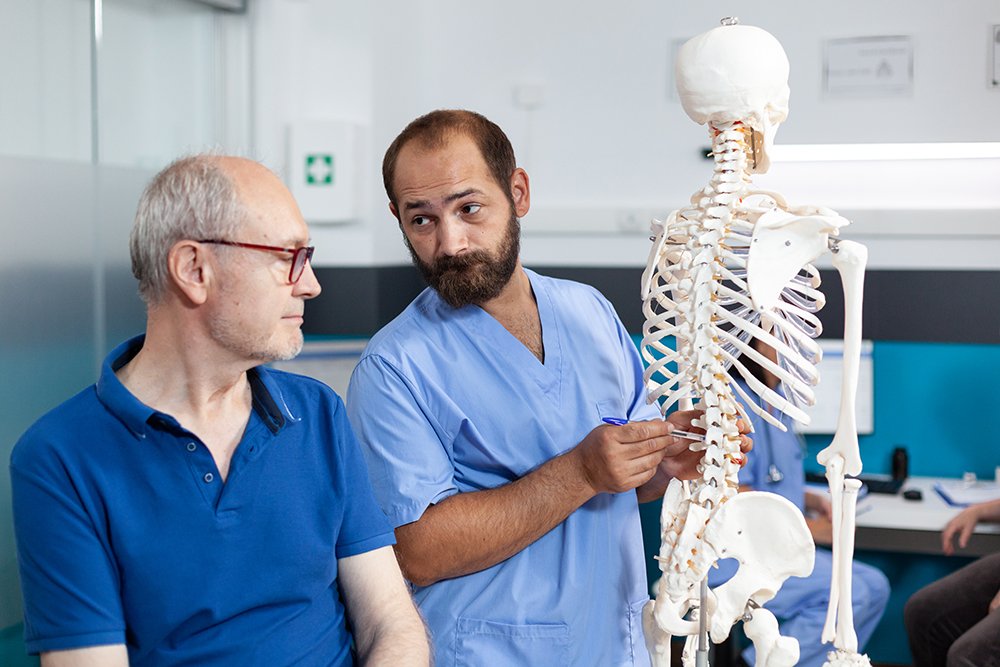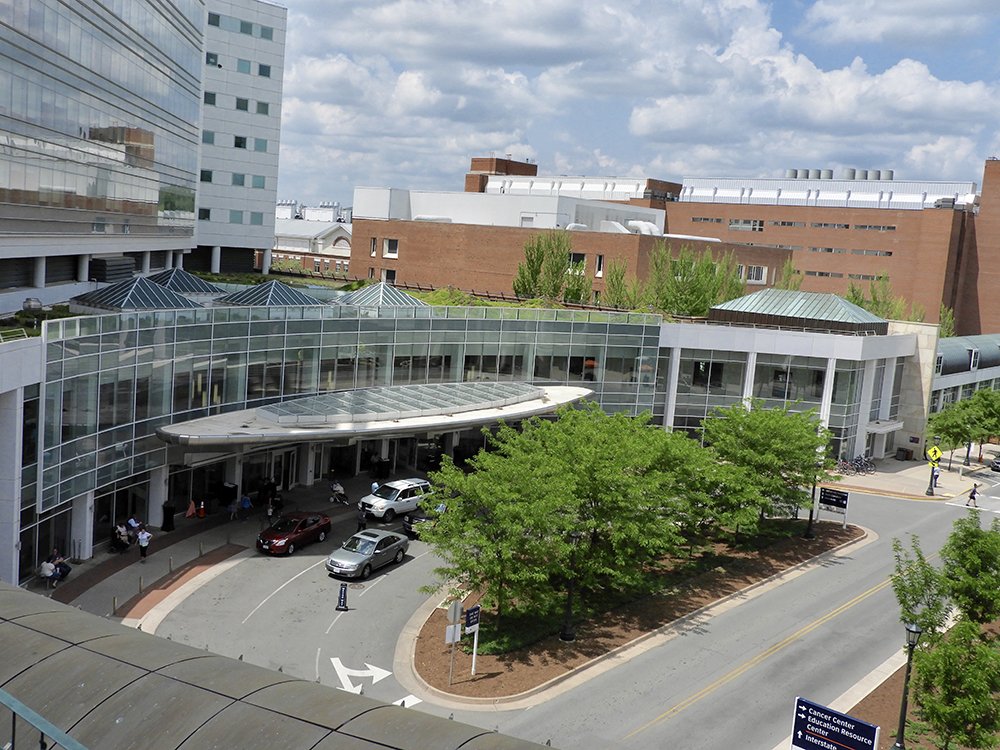Don’t Ignore the Signs: When Your Back Pain Requires Professional Attention
Back pain is a common ailment affecting millions of people worldwide. Whether it’s a fleeting discomfort or a persistent issue, we’ve all experienced some degree of back pain at one point or another. While occasional twinges might not raise much concern, it’s important to recognize that not all back pain is created equal.
Understanding when it’s time to seek professional medical help can make a significant difference in your overall well-being. This blog aims to shed light on the signs that it’s time for you to consult a doctor for your back pain.
In the following sections, we’ll explore the prevalence of back pain, the importance of addressing it promptly, and, most importantly, five crucial signs that should prompt you to schedule a doctor’s appointment.
Your back is a vital part of your body; taking care of it is paramount to living a healthy and pain-free life. Let’s dive into the valuable insights that will guide you towards better back health.

Common Causes of Back Pain
It can originate from various sources, and understanding these common causes is essential to address the issue effectively. Some of the frequent culprits behind back pain include: [1]
- Muscle Strain
- Herniated Disc
- Spinal Stenosis
- Arthritis
- Scoliosis
- Sciatica
- Degenerative Disc Disease
- Injuries
- Lifestyle Factors
Acute vs. Chronic Back Pain
It’s crucial to differentiate between acute and chronic back pain because the management and potential underlying causes can significantly vary.[2]
Acute Back Pain typically results from a specific incident or injury. It often has a known cause and can resolve with proper rest, pain management, and sometimes physical therapy. While it can be intense, acute pain is usually short-lived.
Chronic Back Pain, on the other hand, persists for weeks, months, or even years. It may have complex underlying factors like degenerative conditions, arthritis, or structural issues. Managing chronic pain often requires a more comprehensive approach, including long-term pain management strategies and sometimes surgery.

The Importance of Early Intervention
Early intervention in addressing back pain can make all the difference in your quality of life. Ignoring or neglecting persistent discomfort in your back may lead to negative consequences.
Untreated back pain can result in reduced mobility, decreased overall physical activity, and impaired quality of life. It may also lead to the development of chronic pain, which can be more challenging to manage over time.
On the contrary, seeking timely medical advice when you first notice signs of back pain enables your care provider to identify the root cause, develop appropriate treatment plans, and provide you with strategies to prevent further issues.

When to See a Doctor for Back Pain
From persistent pain to alarming sensory symptoms, we’ve got you covered on when and why you should consult your doctor for your back pain concerns. Let’s dive into five telltale signs indicating it’s time to schedule that essential doctor’s appointment.
1. Persistent Pain
When it comes to your back pain, enduring discomfort that just won’t go away is a straightforward reason to see a doctor. It’s essential to distinguish between the occasional twinge, which often results from temporary strain and can usually be managed with rest, and persistent pain that lingers for days or even weeks without improvement.[3]
If your back pain falls into the latter category, it could indicate an underlying issue, such as herniated discs or nerve problems, which could worsen if left unaddressed. Seeking medical attention for persistent pain is important to identifying the root cause and establishing an effective treatment plan, ensuring your long-term health and comfort.
2. Severe Pain
Severe back pain isn’t just uncomfortable; it’s agonizing and can disrupt your life significantly. If you’re dealing with excruciating pain that hampers your daily activities or sleep, it’s a clear sign to see immediate medical attention.
Severe back pain can be a sign of serious underlying issues, such as a herniated disc or spinal injury, which require timely intervention to prevent further complications and alleviate your suffering.
Don’t underestimate the impact of pain intensity – when it becomes severe, it’s your body’s way of telling you it’s time to see your doctor!
3. Pain Radiating Down the Legs
Radiating pain, which travels down one or both legs, is a crucial symptom when dealing with back pain. Radiating pain often indicates nerve compression or irritation, such as sciatica.[4] This pain can stem from herniated discs or spinal stenosis, leading to ongoing discomfort, muscle weakness, and mobility issues.
Recognizing radiating pain is vital as it helps identify the problem’s source and assists your care provider in devising the right treatment plan to alleviate nerve pressure and restore your comfort and mobility.
4. Numbness or Tingling
When it comes to back pain, it’s not just about discomfort. Sensory symptoms like numbness and tingling can offer essential clues about underlying issues. Numbness and tingling typically occur in the arms and legs and are linked to specific medical conditions, such as nerve compression due to herniated discs or spinal stenosis.[5]
Recognizing these sensory symptoms is crucial, as they can help pinpoint the precise cause of your discomfort, guiding your care provider to the most effective treatment to relieve your nerve pressure and restore normal sensation.
5. Loss of Bowel or Bladder Control
If you’re grappling with back pain and notice a loss of bowel or bladder control, it’s a sign that demands urgent medical attention. This symptom is concerning because it’s often linked to severe nerve compression or spinal cord issues like herniated discs or spinal tumors that require swift intervention to prevent lasting neurological damage.[6]
If you’re experiencing this symptom alongside back pain, don’t hesitate – seek immediate medical help to diagnose the cause and safeguard your long-term well-being.

When to Seek Emergency Care
Certain situations warrant immediate medical attention when it comes to back pain. These red flags should never be ignored:
- Sudden and Severe Pain
- Loss of Bowel or Bladder Control
- Numbness or Weakness in Legs
- Fever and Chills
- Unexplained Weight Loss
- History of Cancer
- Radiating Chest or Abdominal Pain
Delaying care can have serious consequences in these situations, so it’s crucial to seek emergency medical attention promptly to assess and address potential life-threatening conditions.

Preventing Future Back Pain
While addressing existing back pain is essential, preventing future discomfort is equally important for long-term well-being. Incorporating lifestyle and habit modifications can significantly reduce the risk of recurrent back pain.
Here are some tips for maintaining a healthy spine:
- Maintain good posture while sitting, standing, or lifting.
- Stay active to strengthen your core and back muscles
- Stay hydrated to support spinal discs
- Quit smoking
- Manage stress
- Get a routine check-up to help detect and address any issues
By implementing these spine-friendly practices into your daily life, you can reduce the likelihood of future back pain and enjoy improved overall health and mobility.

Find Relief from Back Pain with Sonoran Pain and Spine
Recognizing the signs that indicate when it’s time to see a doctor for back pain is vital for your well-being. It’s about addressing current pain and preventing future discomfort by adopting spine-healthy habits.
At Sonoran Pain and Spine, we specialize in identifying the root causes of pain and providing personalized, non-surgical pain management plans that address your specific needs so that you can get back to enjoying your everyday life.
Don’t wait – schedule an appointment to start your journey toward a pain-free future.
Your health and comfort deserve it!
Resources
- “Common Causes of Back Pain – Types & Treatment | NIAMS.” 1 Feb. 2023, https://www.niams.nih.gov/health-topics/back-pain. Accessed 5 Sep. 2023.
- “Acute and chronic low back pain – PubMed.” https://pubmed.ncbi.nlm.nih.gov/24994051/. Accessed 5 Sep. 2023.
- “Chronic back pain and its association with quality of life in a large ….” 26 Sep. 2018, https://www.ncbi.nlm.nih.gov/pmc/articles/PMC6158815/. Accessed 5 Sep. 2023.
- “Diagnosis and treatment of sciatica – PMC – NCBI.” https://www.ncbi.nlm.nih.gov/pmc/articles/PMC1895638/. Accessed 5 Sep. 2023.
- “Lumbosacral Radiculopathy – StatPearls – NCBI Bookshelf.” 4 Aug. 2023, https://www.ncbi.nlm.nih.gov/books/NBK430837/. Accessed 5 Sep. 2023.
- “Bladder and Bowel Symptoms Among Adults Presenting With Low ….” https://www.ncbi.nlm.nih.gov/pmc/articles/PMC4161716/. Accessed 5 Sep. 2023.
Related Posts
Radiofrequency Ablation for Effective Chronic Pain Relief
Chronic pain can be an exhausting and life-altering condition, impacting not only physical health but also emotional…
Diabetic Neuropathy: What to Expect
Diabetics' numbers continue to rise every year. Recent statistics show that 11% of the total US population has…



